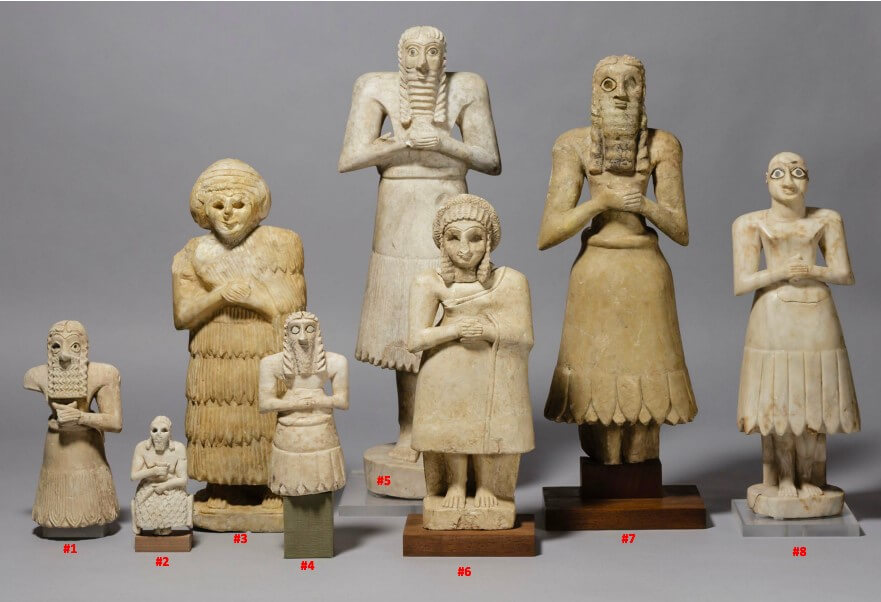
The figures in the image represent The Tell Asmar sculpture hoard, a collection of 12 human statues discovered in the Diyala plain of Iraq in 1934. The excavators found the statues buried in a single deposit, and the smaller statues laid on top of the larger ones. The construction of the statues is made from similar material, which comprises a combination of alabaster and processed gypsum. The statues feature two very tall figures, a hero figure, and nine other seemingly ordinary people with large staring eyes looking up with clasped hands. The focus here is on statue number five, which is the tallest and the most enormous one. This post discusses the specific aspects of this figure and illustrates how it is stylized.
Stylization refers to conventionally presenting something but in a no-naturalistic form. Ideally, stylization depicts consistency in an artist’s work and symbolizes adherence to a particular ideal value. The common belief is that Figure number five represents the Mesopotamian God Abu. The sculpture base has a symbol curved which shows a lion-headed eagle gliding among leafy vegetation and gazelles. The circular base is for stability, the rendering of the image is in a standing position, and the sculptors used shells to make the eyes. The sculpture also has enormous staring eyes that signify authority and reverence, and the dressing is male clothing of the Dynastic periods of Mesopotamia. The stylization style casts realistic figures into abstract shapes to reveal geometric styles in the sculptures. Moreover, the modeling of the statues is from professed gypsum and alabaster, a hard form of the mineral gypsum (calcium sulfate).
